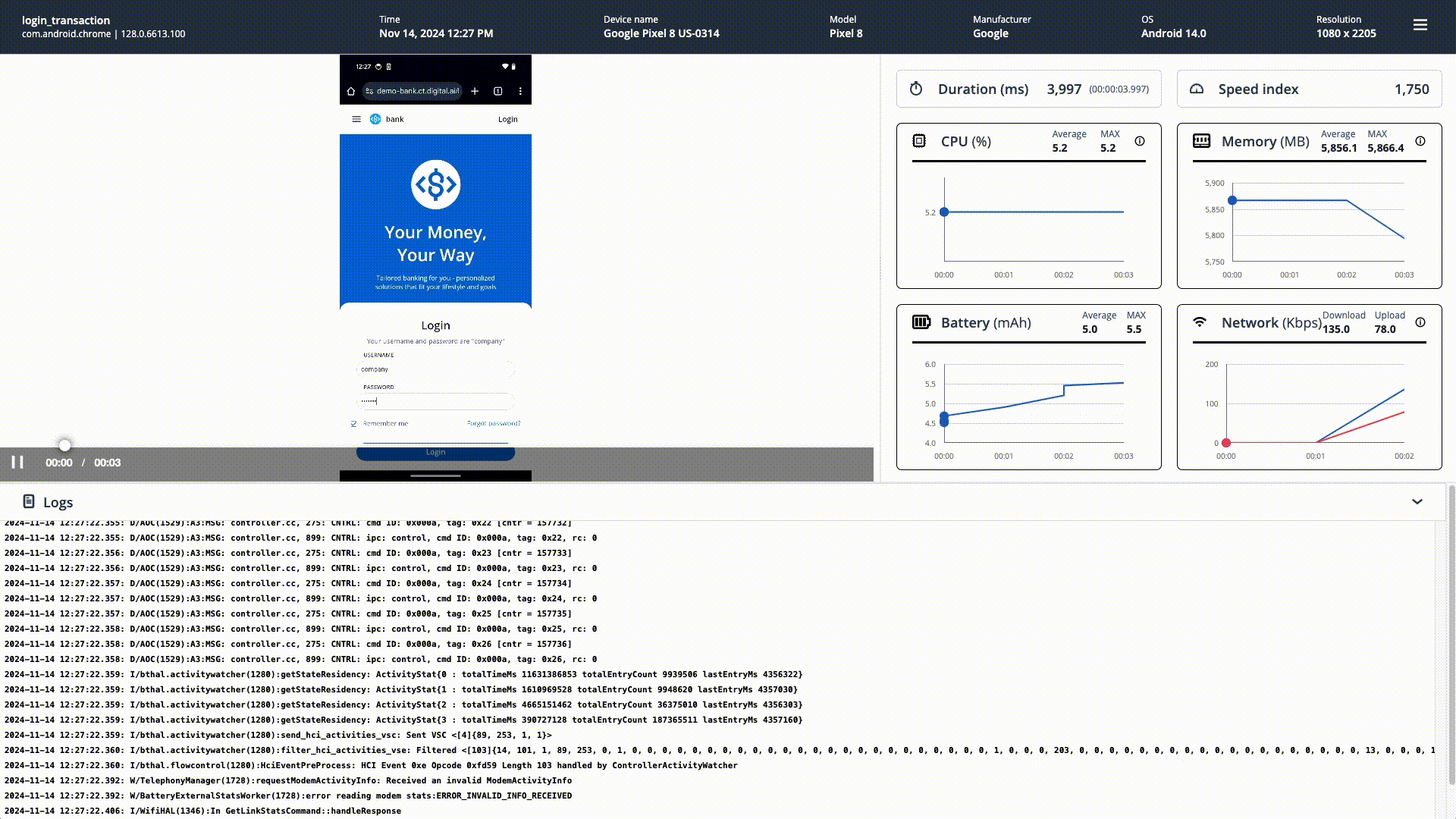endPerformanceTransaction - Automation Command
Description
The endPerformanceTransaction command is used to stop an active performance transaction and generate a Performance Transaction Report.
This report contains key performance metrics collected during the test, helping teams analyze and optimize application behavior under different conditions.
This command should always be used in conjunction with either:
- startPerformanceTransaction (for device-wide performance metrics), or
- startPerformanceTransactionForApplication (for application-specific performance metrics).
This command is available in Appium for iOS and Android devices and supports testing across Web, Native, and Hybrid applications.
endPerformanceTransactionmust be executed afterstartPerformanceTransactionorstartPerformanceTransactionForApplicationto ensure a report is generated.- If a transaction exceeds 5 minutes or if the test session ends, the transaction will be automatically canceled, and no performance data will be recorded.
Parameters
| Parameter Name | Value | Description |
|---|---|---|
transactionName | String | Provide a name for the performance transaction. A good rule of thumb is to name the transaction after the functional test it corresponds to, making it easier to track and analyze in reports. |
Code Example
The endPerformanceTransaction command can be executed using the executeScript function:
- Java
- Python
- C#
- JavaScript
- Ruby
driver.executeScript("seetest:client.endPerformanceTransaction", "login_transaction");
self.driver.execute_script("seetest:client.endPerformanceTransaction", "login_transaction")
driver.ExecuteScript("seetest:client.endPerformanceTransaction", "login_transaction");
driver.executeScript("seetest:client.endPerformanceTransaction", "login_transaction");
driver.execute_script("seetest:client.endPerformanceTransaction", "login_transaction")
Practical Example
When performing performance testing, the ability to capture and analyze response times is crucial. Using endPerformanceTransaction, you can generate a detailed performance report and gain insights into how your app behaves during key user flows.
The endPerformanceTransaction command returns an object containing performance details, which can be used for further validation.
Object transaction = driver.executeScript("seetest:client.endPerformanceTransaction(\"" + transactionName + "\")");
System.out.println("Transaction Information: " + transaction.toString());
Here is a sample output:
Transaction Information: {transactionName=login_transaction, transactionId=<>, appName=<app_name>, appVersion=1, deviceInfo={uid=<uid>, model=iPhone 15, name=iPhone 15 US-0280, deviceType=IOS, category=PHONE, notes=, manufacturer=Apple, osVersion=18.0.1, emulator=false}, metrics={startTimestamp=1742393023715, endTimestamp=1742393024813, cpuAvg=136.44447818393948, cpuMax=136.44447818393948, memoryAvg=1095.6199798583984, memoryMax=1095.6199798583984, batteryAvg=8.841474067676428, batteryMax=8.841474067676428, nvProfileName=3G-average, networkDownload=0, networkUpload=0}, deviceScreenDimension={width=1178, height=2556}, link=<base_url>/reporter/test-trans/index.html?trans_id=<id>}
Once the test completes, a Performance Transaction Report is generated, presenting the sample output data in a more visual and structured format, making it easier to analyze performance metrics.

The Performance Transaction Report is generated separately from the Functional Test Report.
If you want to combine performance-related information into a single report, consider using the following:
- Performance Transactions REST API - View API Documentation
- Report Automation Command - View Documentation